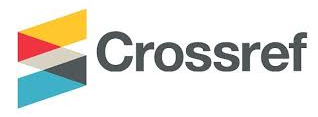ANALISIS POWER YANG DIPERLUKAN PADA RANCANG BANGUN ALAT BANTU SENAI PORTABEL
Required Power Analysis in The Design and Fabrication of Portable Senai Equipment
DOI:
https://doi.org/10.21009/JKEM.7.2.2Keywords:
Portable, Power Control, DC Electric Motor, Infrared SensorAbstract
Machines as tools in human work are currently the main needs that need to be in the goods and service industry. The machine as a tool based on its use is divided into 2 types, namely permanent/static and mobility/portable. Permanent machines are more widely used in the industrial world, while portable machines are more for repair services, which require various locations that are sometimes difficult to reach, and the application position can operate properly, and save time, energy, operational costs, and can be used anywhere. The weakness of portable machines lies in the power used because the power source uses mostly batteries. For this reason, further research is needed to obtain an analysis of the appropriate power requirements in the field. The steps taken in this study used experimental research methods to obtain results relevant to the power used according to the design needs of the tool. Control and power design analysis uses components such as DC electric motors, switches, adapters, and infrared sensors. From the results of the analysis of the control and power design calculations, the results obtained in the calculation of the electric motor power of 114 W (general power used in portable drilling machines) and the calculation of torque of 6.5 Nm the capacity in making external threads using this tool is capable of a maximum diameter of M6 with ST41 material.
References
[2] M. E. Hadi, Nofriadi, and S.S, "Perancangan dan Rekayasa Alat Bantu Untuk Snei Ulir Standar Pada Mesin Bubut," Jurnal Teknik Mesin, vol. 4, no. 1, pp. 9-14, 2007.
[3] P. N. Utomo, "Rancang Bangun Alat Bantu Tap dan Snei Untuk Bengkel Mesin Skala Rumah," Politeknik Negeri Sriwijaya, 2014.
[4] Pujono, and I.R.W. Fauzi, "Rancang Bangun Mesin Senai Untuk Ulir M11," Infotekmesin, vol 9, no.2, pp. 53-60, 2018.
[5] Sularso, and K. Suga, "Dasar Perencanaan dan Pemilihan Elemen Mesin," Book of PT. Pradnya Paramita, 2004.
[6] Anarwati, Agustin, and Setiono, "Rancang Bangun Alat Pengatur Kecepatan Putar Motor DC Power Windows Berbasis PLC Panasonic Menggunakan Human Machine Interface (HMI)," Gema Teknologi, vol. 19, no.3, pp. 32-37, 2017.
[7] H. E. Azizul., "Sistem Kontrol, Malang " UMM Press, 2012.
[8] A. Susanto, "Alat Bantu Belajar Motor Langkah," Jurusan Teknik Elektro Universitas Sanata Dharma Yogyakarta, 2007.
[9] A. W. a. :, "https://bacteriality.com/merk-bor-listrik-terbaik/," time access 13.00 WIB, 11 Juni 2021.
[10] I. P. M. Bagia N, I., "Motor – Motor Listrik Cetakan 1," Book publish of CV.Rasi Terbit, vol. Printed 1, 2018.
[11] P. Ridho, "Aplikasi Sensor Infrared Sebagai Pendeteksi Cangkir Plastik Air Mineral Untuk Mengaktifkan Motor AC Pada Rancang Bangun Mesin Penghancur Plastik," Politeknik Negeri Sriwijaya, 2016.






















